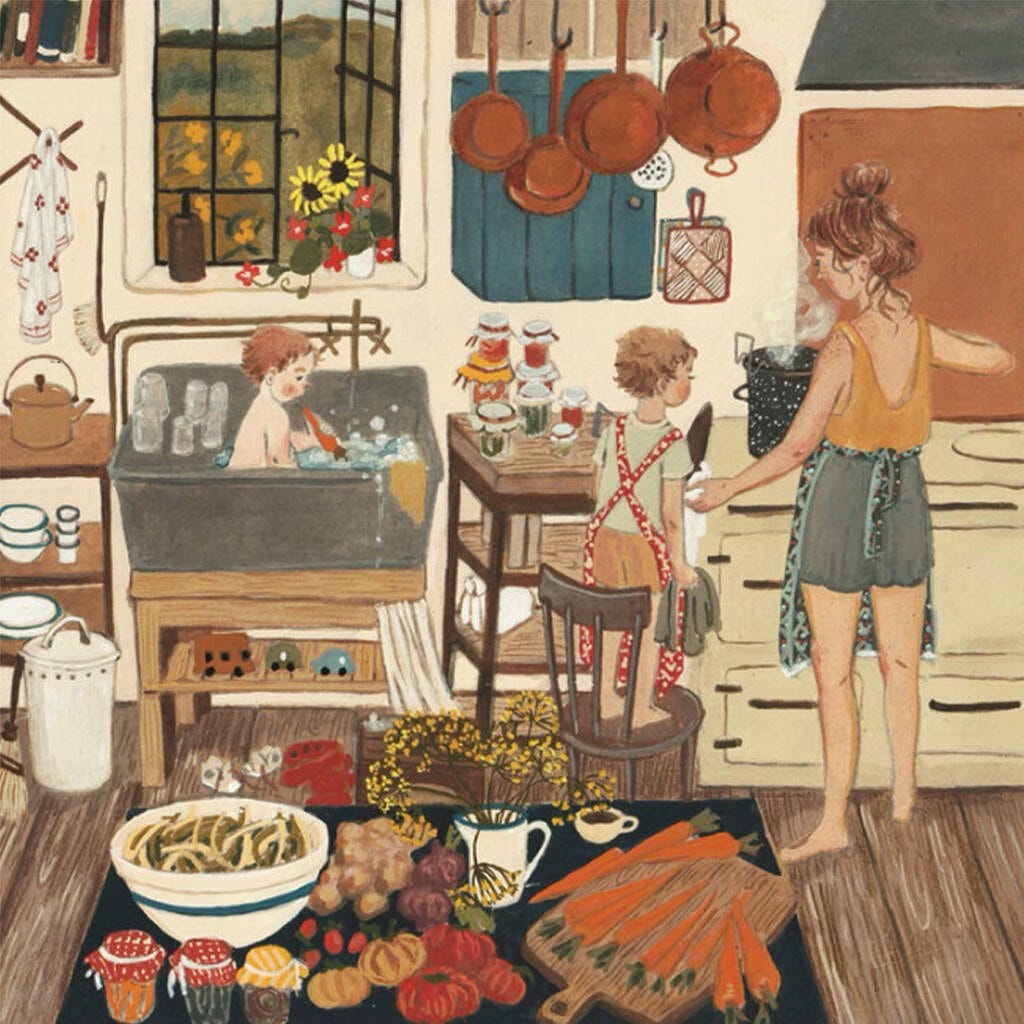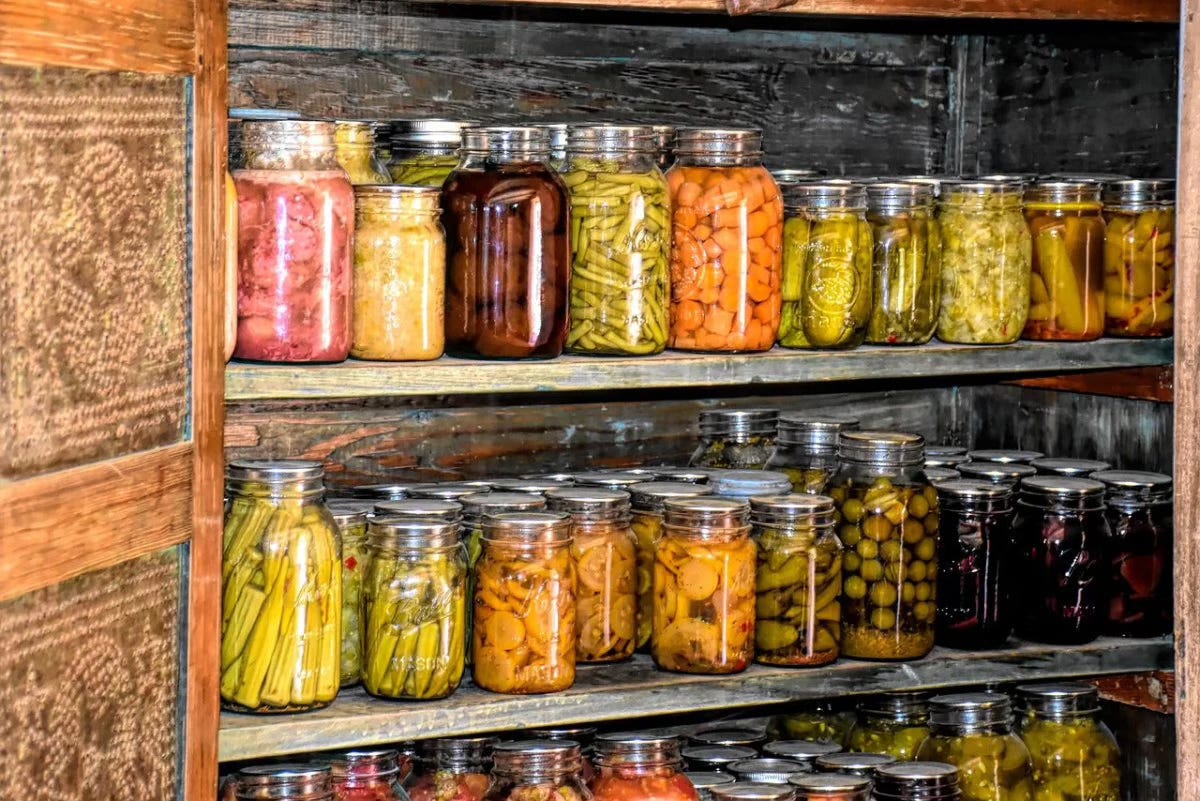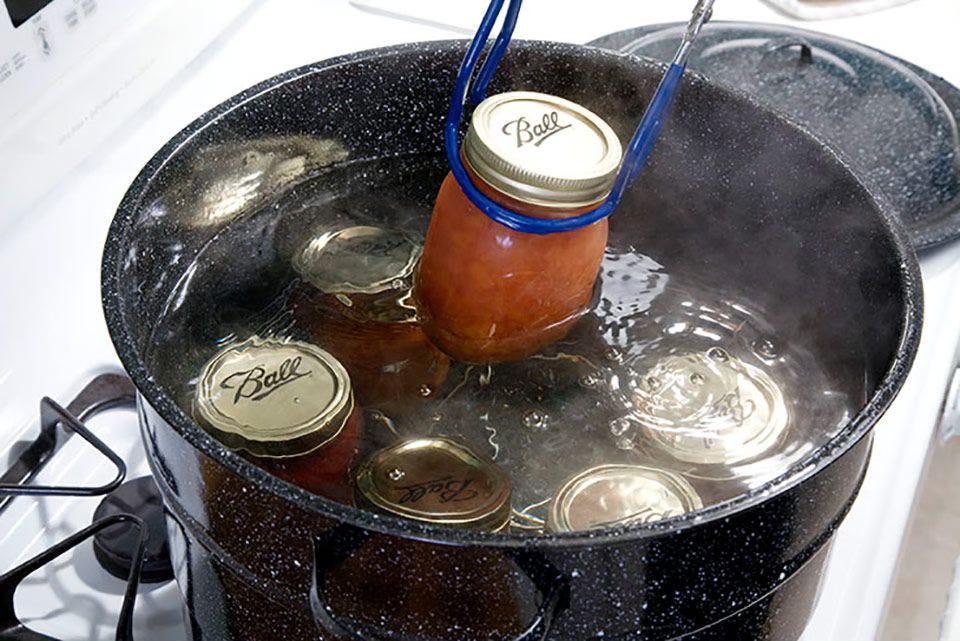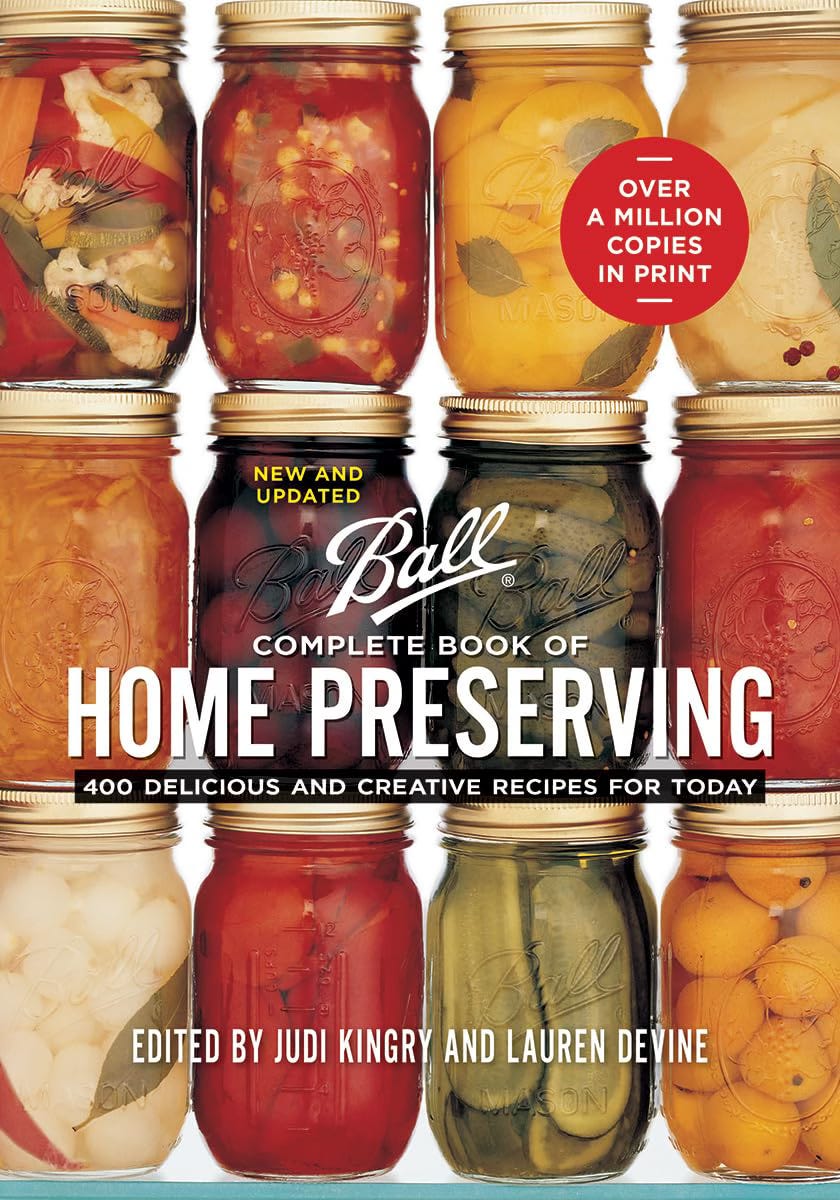Soft Launching Your Homestead, Part 2
De-mystifying canning and a story for the kiddos (see the end of this post!)
We’ve been talking about the appeal of and need for slowly on-ramping your homestead.
To be brought up to speed on the why’s and how’s, I suggest you go and read Part 1 here.
In a nutshell, I believe many of us are craving a richer experience of home, love and joy in the simple as well as the know-how’s required to make a house a life-nourishing home.
The original post shared four ways to soft launch your homestead and now we are talking number 5 and one of my favorites, canning.
I don’t know about you but canning was always something that I found intimidating-which I think is by design.
The rules and threats of botulism around canning can make all of us feel like we aren’t in the least bit qualified to dare preserve our own food, (HOW DARE YOU CONSIDER IT!), but I can tell you as someone that did not grow up canning,
YOU
CAN
DO
IT.
It’s really not that difficult and can add beauty, food security, and convenient (after the initial work) fast delicious meals to your homestead.
You do NOT need to wait to have your own garden to can, so don’t let that stop you.
In fact, I recommend learning canning now and getting that out of the way before you have to also learn how to garden, butcher meat and keep chickens to provide foods you will very likely one day can.
Just can now.
Why would you want to can?
Canning is beautiful. We’ve all seen shelves lined with jars of preserved foods. My good friend and neighbor is an expert canner and I will never forget the first time she showed me her pantry full of canned goods. It was absolutely lovely and comforting for her to know she had so much food, “put up” as country folks say.
Learning to can is a very simple way to make your homestead look pretty and feel homey. It’s the look of provision, resourcefulness, nutrition and intentionality all in an often colorful and lovely looking jar.Canning is responsibility and intentionality. Since we have been talking about the enrichment side of homesteading, I think canning is an absolutely necessary topic to be addressed because it involves taking something as simple as green beans, cucumbers, green tomatoes and even okra and turning it into a spicy, savory and snappy treat for the future with zero need for refrigeration. It’s the taking of a food that you grew or purchased or was given and putting it away for a rainy day, so to speak.
It benefits your homestead and how you feel in your home because it’s pre-planning, investment and efficiency all in one.
Whether you are grabbing foods that are on sale at the grocery store or making the most of foods gifted to you, perhaps harvested from your garden or a friend’s, you are taking something that will only last for so long and ensuring that you can use it at a later day. In fact there’s something really special about opening a jar of canned stewed tomatoes to make a sauce or a soup in the middle of winter, thus celebrating all the hard work of the summer and harvest of the fall.
In our grocery store there is often a sale rack with bagged veggies that are about to go bad and therefore are being sold in bulk at a discounted price.
I don’t hesitate to grab them when I see them because I know I can bring them home, can them tomorrow and thus make them last much longer, allowing me to benefit from the cheaper price and make food months in advance. Did you know that canned foods can last a good 2 years.Canning allows you to make entire meals ahead of time. I believe that winter should be a restful and restorative time and having lots of food put up in the warmer months when the days are longer and we feel more energized means that we can easily snack or make a meal in the winter with little fuss or prep.
Canned food comes in handy when you travel, when you picnic, when you are too tired to cook dinner, when you are last minute invite to a potluck, when you want to gift a visitor something special from your homestead. It’s also great when the lights go out!*In North Carolina, power outages are constant. Most of us have generators to help us get by for several days when the power goes out. But generators require gas to run and in some instances we can lose power for 5+ days.
In these situations it’s nice to have some canned goods.
I have many a times put a cute little card, label or decorative cloth on a canned food to elevate it’s beauty and give it as a gift to someone from our home to theirs.Getting in the practice of canning foods is a great way to invest in your homestead, provide for your family, plan for the future and make the most of harvests and grocery store hauls.
Don’t be so sure that refrigeration, fresh produce and freezer items will always be there for you. Canning some foods even on a monthly basis can help you stock your pantry with longer lasting foods in no time!
If you’re intimidated by the process, keep reading!
How to get started
There are numerous ways to can. You can can meat, butter, milk, fruit, veggies.
You can make pickles, ferments, jams, chutney’s, soups, sauces, stews and sauerkraut.
Once you enter the world of canning, you will find the infinite ways and recipes available to help you keep food shelf-stable, but I think there are two SUPER easy ways to get started.
Pickles and hot-packed fruit.
The rules of canning (which we can into in more depth later) are that if the foods are acidic, you can simply water-bath can.
This just means you make the food (jam or pickles, for example) you simply prepare the food, pour it into warmed jars and then seal in a pot of hot water.
It’s actually quite simple.
When you move into preserving foods that are NOT acidic, like meat, stews, green beans (not pickled) or potatoes, then you have to learn to pressure can-which is also not very difficult but a step up from water-bath canning.
I personally think that it’s easier to learn pressure-canning once you have already learned the principles of water-bath canning because they are essentially the same, it’s just that with pressure canning you need to have access to a pressure cooker and closely monitor and maintain the correct pressure.
Acidic foods like jam and pickles just feel more forgiving, streamlined and an easier way to start if you are teaching yourself.
So I suggest you get your hands on some cucumbers or berries and make pickles or hot packed fruits.
In both instances all you have to do is the following:
Clean and sanitize your jars, most dishwashers have a sanitize setting these days
Add your fruit or cucumbers to jars.
Prepare the brine, for fruit it will be a sugar syrup-basically sugar dissolved in water, for pickles it will be a vinegar brine (think ACV, spices, maybe sugar and herbs);
Pour brine or syrup over the produce in your jars, fill nearly to the top, affix lid, lower into canner and bring the water in the water canner to boil and boil for 15-20 minutes (time will vary depending on the produce you are preparing and the size of the jars you are using.
During the process the seals will be suctioned down thus sealing your food while the jar contents are all heated to a temperature that kills harmful bacteria and preserves your food for the future.
***Recipes for pickles and hot packed fruit can be found in the Ball Complete Book of Canning.
It’s honestly that simple.
Now you have hot packed berries in a sugar syrup that can be used on pancakes, ice cream, as a cake topping, pie filling or just as a snack straight out of the can OR you have crunchy pickles to bring to a party, eat with your lunch, complement a dinner or serve as a snack.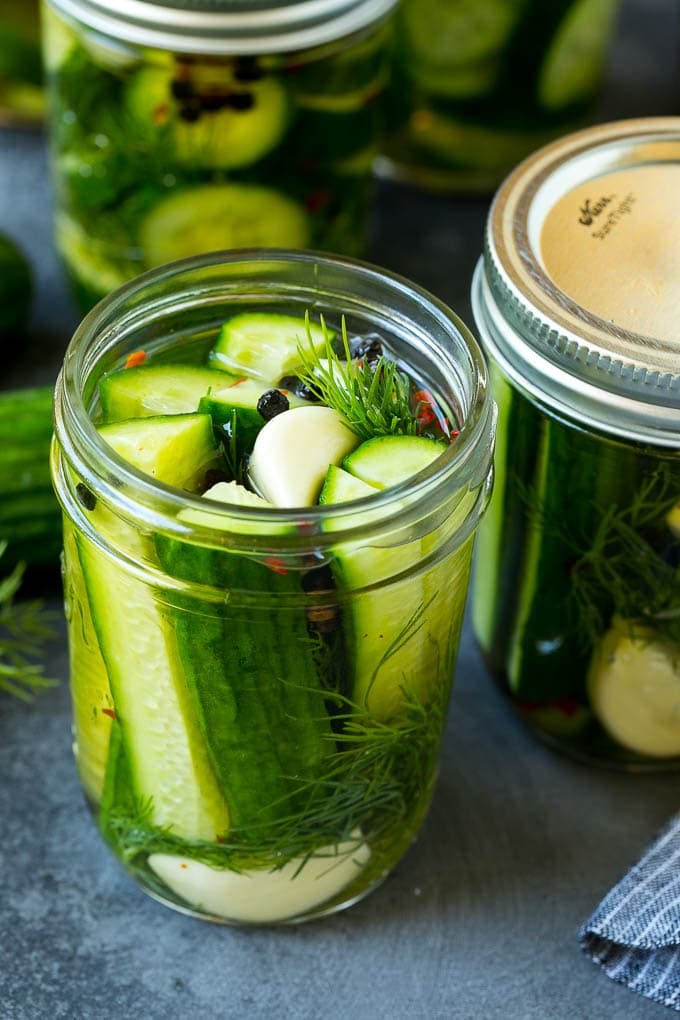

Please take my advice and BUY BOOKS on canning.
Do not solely rely on YouTube videos or the internet in anyway to learn canning.
You should always have a book that tells you what you need to know so that you are not having to constantly check a screen while you can.
This book is really all you need. There are other great ones, but this is adequate to get you started.And remember, you do not have to can alone!
Canning with friends, learning with friends or inviting women in your life who have no idea how to preserve food to have them come into your kitchen and learn with you is a wonderful way to share your homestead!
If there is somebody nearby that knows how to can, ask them to teach you!!!And don’t forget to bring your kids along for the education!
There are lots of aspects of canning that they can help with!
You and I would have benefited from canning alongside someone, so don’t miss this opportunity to bring your kiddos along for the educational ride. There are two blogs (not mine) on this topic here and here.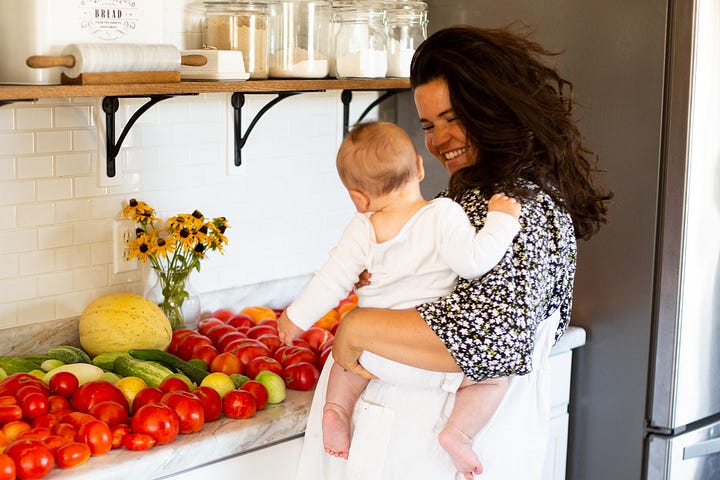
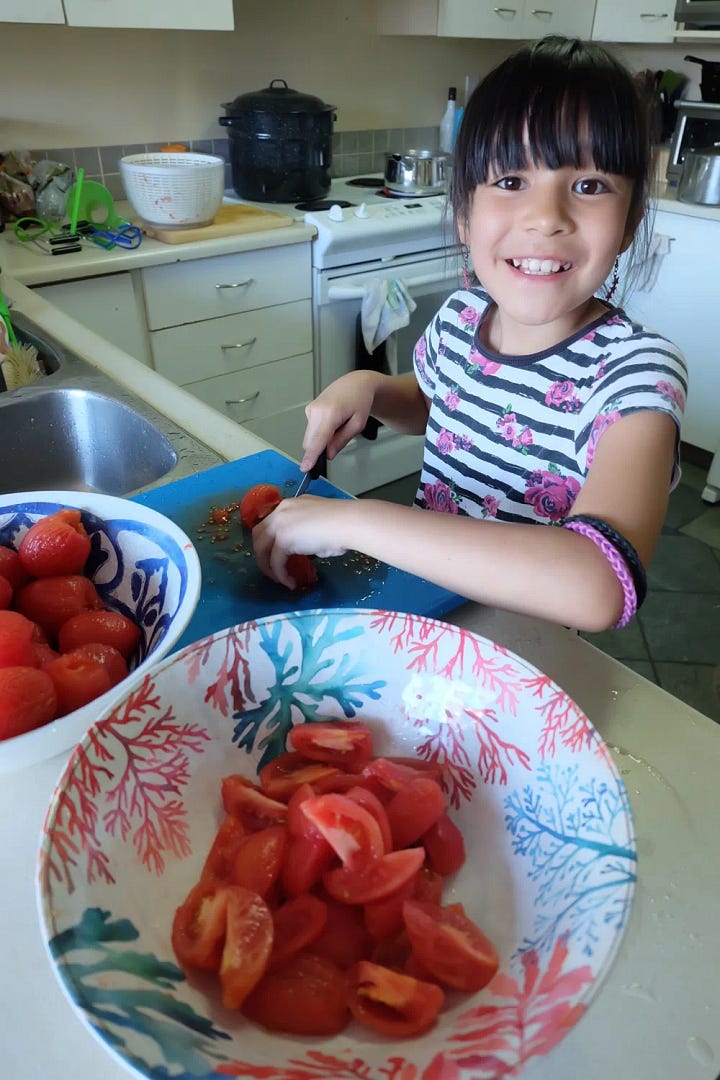
CANNING WITH KIDS And for you Mamas with kids that want to get pumped up for canning but still need some moral support and inspiration, I have something for you!
PS-To my Avid readers,
I wonder if you five would be interested in bypassing the internet and receiving a real live hard-copy newsletter mailed to your mailbox?
Comment PAPER below!





